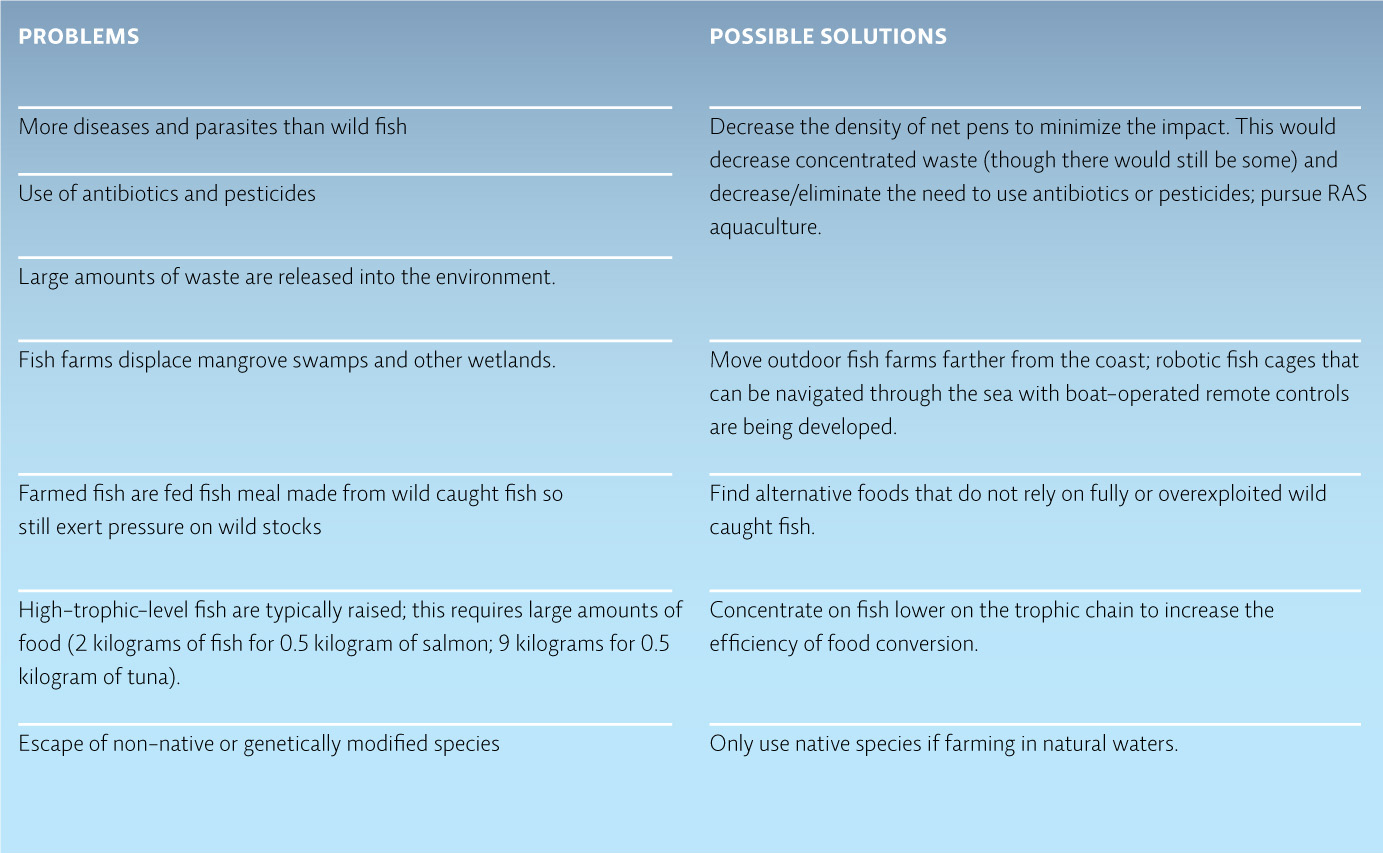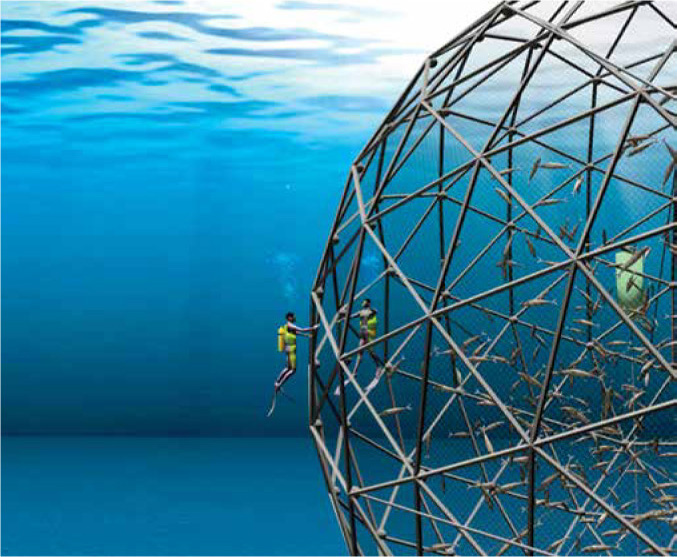14.5 Aquaculture presents environmental challenges.
Once scientists could get marine fish to reliably breed in captivity, entrepreneurs began adapting the aquaculture techniques used in freshwater operations to suit larger ocean fish. Before long, elaborate net pen operations began dotting coastlines around the world. This simple technology has enabled fish farms to out-produce traditional fishers. In 2009, aquaculture crossed the threshold of providing more than half of all seafood consumed worldwide, with Asia leading the way, and China alone producing some 63% of all farmed marine species. But, it has also led to a range of environmental problems including depletion of the populations of smaller fish harvested as food for aquaculture species, excess nutrient release into coastal waters, and ecosystem damage from the aquaculture ponds and net pens. Hundreds of thousands of hectares of tropical mangrove forests have been cleared to make way for shrimp aquaculture ponds. Mangroves are keystone species that provide habitat and protection for a wide variety of species, including humans, and protect coastlines from storm surges during hurricanes. Another problem is transfer of diseases and parasites from farmed to wild populations. In British Columbia, one study showed that farmed salmon spread sea lice to wild populations, causing up to 80% juvenile mortality. Most experts agree that these problems are not insurmountable. But how best to resolve them is a matter of some debate. [infographic 14.6]


254